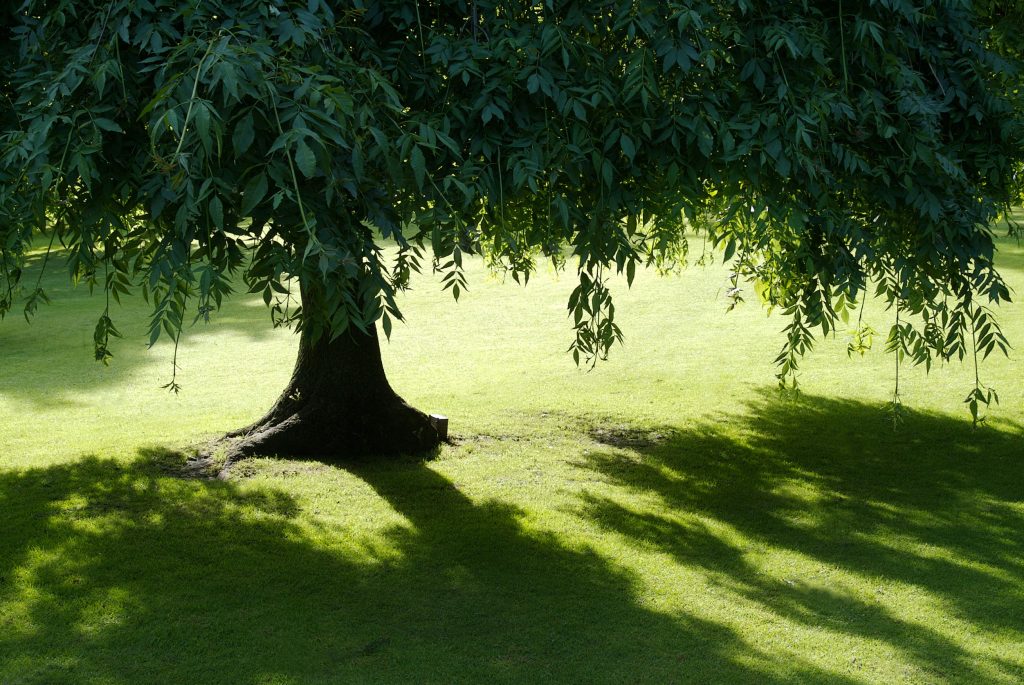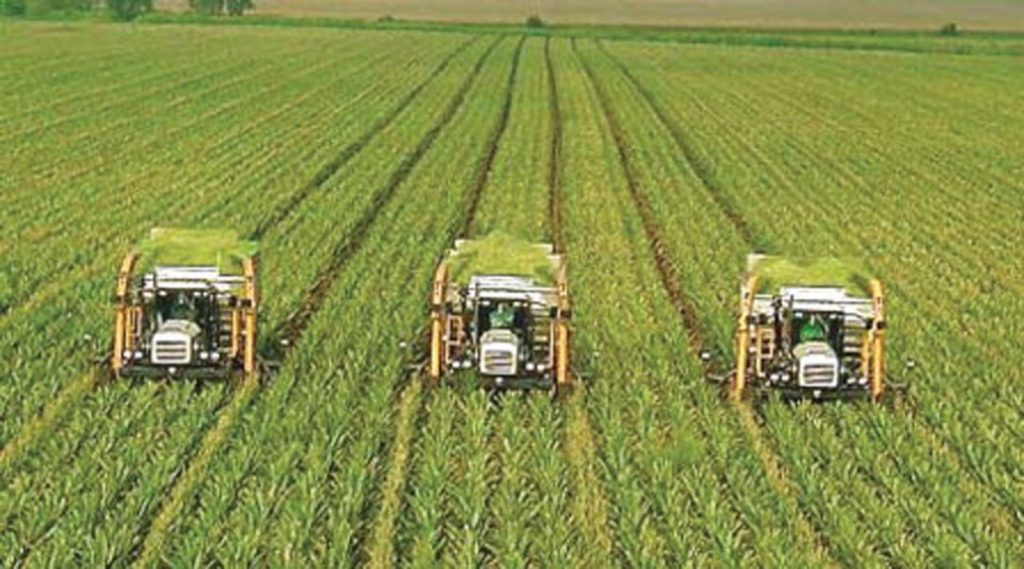Searching for the fastest growing trees in Texas? You are on the right page.
Access to green areas provides enormous health benefits for people across socioeconomic and demographic categories in a world of tall buildings and quick-paced activities. Consider the parks in your community, the tree-lined streets, and the urban woods.
Maybe you’re a tree parent who grows trees in your home to help the city become greener. Aside from the significance of green infrastructure, future property sales will benefit from the trees you plant now.
Homes with lovely trees and landscaping often draw more purchasers than those with more sparsely planted yards. Up to 20% more money can be made from your home by adding trees and landscaping.
Fastest Growing Trees in Texas
While it is true that planting trees around your home is a long-term investment, if you choose any of these varieties, you may start benefiting from cooler shade in your yard, more privacy, and greater property value in a shorter time. Below are the 7 fastest growing trees in Texas:
- Red Maple (Acer rubrum)
- American Elm (Ulmus americana)
- Desert Willow (Chilopsis linearis)
- Texas Ash (Fraxinus texensis)
- Common Hackberry (Celtis occidentalis)
- Shumard Oak (Quercus shumardii)
- Water Oak (Quercus nigra)
- Eastern Redbud (Cercis canadensis)
- Cherry Laurel Tree (Prunus caroliniana)
- River Birch (Betula nigra)
- Callery Pear (Pyrus calleryana)
- American Sycamore (Platanus occidentalis)
- Flowering Dogwood Tree (Cornus florida)
- Tuliptree (Liriodendron tulipifera)
- Leyland Cypress (Cupressus × leylandii)
- Italian Cypress (Cupressus sempervirens)
- Eastern Red Cedar (Juniperus virginiana)
Let’s look at some of them in detail.
Desert Willow
The desert willow is a well-liked option for Texans looking for landscaping that matures rapidly due to its speedy growth. They can reach a height of 30 feet and, as you might have guessed from the name, prefer a dry heat, which Texas can provide in many regions.
They produce pastel-colored trumpet-shaped flowers. Desert willows can withstand nagging deer that insist on nibbling on the tree’s leaves. Deer may graze as much as they choose; the desert willow will swiftly regenerate.
Cherry Laurel
Cherry laurels are beautiful, evergreen trees that can grow more than 25 inches annually. Despite their modest stature, they grow as quickly as or faster than the big trees on the list, which enables them to reach their 40-foot maximum height quickly.
Cherry laurels have advantages even if they won’t offer as much shade. The fall-ripening cherry berry is tasty to birds but poisonous to humans. The tree can withstand drought, and its beautiful white spring blossoms have a pleasant aroma.
Cherry laurel is best planted between October and March, however, fall is optimal. As a result, the roots have time to grow before the winter.
Related: 13Best Nursing Schools in Texas Online: ACCRED, REQ, FAQs
American Elm
The American elm is noted for having a robust trunk and a rounded crown in the style of a vase. It is indigenous to Texas and other states in eastern and central North America.
Depending on the environmental conditions, the height can reach 50 to 60 feet with a 3 to 6-foot annual growth rate. They have a magnificent canopy that resembles a fountain and spreads out widely (30 to 60 feet), providing a ton of shade.
Southern Magnolia
One of the quickest-growing trees you can plant in Texas is this broad-leaved, evergreen southern magnolia. It can reach 80 feet and has a spread of roughly 40 feet. They grow between 12 and 24 inches every year.
In the late spring and early summer, its substantial, creamy white, and waxy-scented blossoms will fill your yard with a distinct, pleasurable fragrance. In northern climates, the tree needs to be protected from the heat and winds of winter.
Soils that are acidic, loamy, moist, sandy, well-drained, and clay are good for the growth of southern magnolias. It can withstand a small number of floods as well as some dryness.
Bald Express
This tree typically grows close to or in still water, which is why its other popular name is swamp cypress. However, this doesn’t indicate that water is necessary for the tree to thrive. Any soil with some acidity and moderate moisture content is suitable.
If your home borders a river, pond, or lake, you should plant your bald cypress there because it looks wonderful there.
The bald cypress tree may grow to a height of about 120 feet in its natural environment, although often reaching a height of between 50 and 70 feet in most landscape settings. Given that they are anticipated to reach 20 or 30 feet wide, they will probably offer shade for your property.
Live Oak
We cannot discuss Texas without mentioning the live oak. They are incredibly well-liked and as majestic as the state of Texas itself.
It’s not surprising that Texans adore these shade-giving beauties given their enormous stature and broad canopy. Live oaks have a long lifespan. They are sturdy, strong trees that offer protection to a wide range of Texas species.
Pecan Tree
The hickory family includes the pecan tree, the proud state tree of Texas. It can get pretty big and offer shade on sweltering Texas summer days. The best thing, though? We get buttery, sweet nuts from it for pecan pie and countless other dishes.
Tips for Growing Trees
The ideal moment to plant a tree was twenty years ago, as any gardener will tell you. But today is the second-best opportunity, so get to work and make it happen.
A tree offers countless benefits, such as shade, birdsong, and even a boost in your home value, and seedlings are not expensive. Here are the top 5 suggestions to get you going.
Pick A Tree With Care And Consideration
Whether you get along well with the new tree in your garden primarily depends on how carefully you chose the species.
As much thought should go into choosing a tree as you would a spouse or even a pet. When compared to few dogs or marriages, many trees live a century or longer. Choose a tree that thrives in the conditions you have identified after carefully considering what you have to give a new tree.
Determine your available space, exposure, soil type, and drainage requirements. Choose a tree species that is suitable for your site. Then go to the garden center and choose a healthy specimen.
Plant The Tree Properly
A properly planted tree develops more quickly and is more likely to be strong and healthy than one that is not. To backfill the hole, mix one part compost to three parts excavated soil, making sure the hole is three times the diameter of the rootball.
Plant your tree on a cool, windless, humid day in the spring or the fall. Soak the roots of your bare-root tree the night before planting.
Take away the container and/or all wires and ropes used for packaging. The tree should be placed such that the soil level is the same as it was in the container or previous planting area.
Related: 10 Best Veterinary Schools in Texas-Tuition & Requirements
Avoid Cutting Back On Water
Even if you picked a drought-tolerant tree, you’ll still need to give it plenty of water in the early years following planting.
Water the tree immediately after planting at low pressure to help the soil settle. Then, water the tree thoroughly anytime the soil is dry to encourage the development of deep, sturdy roots.
How about the winter? Make sure the tree is well-irrigated before the winter. If you have wet winters, irrigation won’t be a problem. But when it’s warm and dry, go with the hose.
A Young Tree Shouldn’t Be Pruned Or Fertilized
Always keep in mind that your tree is attempting to establish itself in a new area. It must survive the winter, establish a solid root system, and adjust to the new growing circumstances.
In light of this, it is simply not a good idea to encourage the tree to grow quicker and generate more foliage. Wait until the second or third year after planting a tree before fertilizing it.
Similar to this, initially just prune what is absolutely necessary. You can begin to prune or train the tree as it grows.
Grass Is Not Mulch
Consider the gentle covering of decaying leaves that a forest offers its trees. That is natural mulch, an organic material laid over the root zone of a tree to ward off heat and cold, retain moisture, and control weeds.
For a year or two, don’t even consider planting grass beneath a young tree. Trees struggle to compete with grass for the resources it needs to grow.
Importance of Growing Trees
The main reasons we grow trees are to create shade and enhance our environment. Although these are wonderful advantages, trees also offer additional, less visible advantages.
Economic Advantages
- By providing shade to your home’s south and west sides, strategically positioned trees can lower your summer cooling expenses. Deciduous trees will let the sun shine through and warm your home in the winter if they are used.
- To lessen the chilling effects of winter winds, place evergreen trees on the north side of your house and plant bushes around the foundation.
- A home with mature, healthy trees and a well-kept yard may be worth up to 10% more than one with little or no landscaping.
Environmental Advantages
- The ecology benefits greatly from trees.
- Through evaporative cooling and lowering the quantity of sunshine that reaches parking lots and buildings, trees lessen the urban heat island effect. This is particularly true in locations with significant impervious surfaces, including retail parking lots and industrial complexes.
- By removing dangerous dust and pollutants from the air we breathe, like ozone, carbon monoxide, and sulfur dioxide, trees help to enhance the quality of the air we breathe.
- We require oxygen to breathe, which trees emit.
- Trees lessen the quantity of stormwater runoff, which lessens erosion, pollution, and possibly even the consequences of flooding in our waterways.
- The habitat of many wildlife species is provided by trees.
- Many birds and mammals find homes, food, and protection in trees.
Communal Advantages
- Despite the fact that you may own the trees on your land, your neighbors could also gain from them.
- Trees may benefit your entire community with thoughtful planning.
- Traffic travels more slowly and safely when streets are lined by trees.
- The placement of trees can block out undesirable views or noise from congested highways.
- The architecture or design of buildings or entire neighborhoods can be enhanced by trees.
Social Advantages
- Life is better with trees. It has been demonstrated that spending time in green areas and around trees helps us feel less stressed during the day.
- It has been observed that patients who had a view of trees from their hospital room recovered from surgery more rapidly.
- Spending time outdoors in green settings has been found to help kids retain more of the knowledge they learn in school.
- Trees are frequently planted as permanent memorials, remembrances of loved ones, or to mark important occasions in our lives.
What’s the Fastest Growing Shade Tree in Texas?
You might be familiar with this tree by its other names, red oak or pin oak. Whatever name you give it, it makes a fantastic shade tree!
The Nuttall Oak is the oak tree that grows the quickest. This indicates that it soon creates a wonderful, green canopy to protect your home from the intense Texas sun.
What is the Fastest Growing Tree in East Texas?
The southern magnolia tree has a maximum height of 80 feet.
One of the quickest-growing trees you can plant in Texas is this broad-leaved, evergreen southern magnolia. It can reach 80 feet and has a spread of roughly 40 feet. They grow between 12 and 24 inches every year.
What Is The Most Popular Tree in Texas?
Live oaks, also referred to as Quercus virginiana, are the most widely planted trees in Texas. A live oak tree may maybe already be present on your land.
There are just a few species of live oak, although inner live oaks and escarpments are the main varieties.
What is The Fastest Growing Evergreen Tree in Texas?
An evergreen with stunning silver-blue foliage and a comparatively quick growth rate is the Carolina Sapphire.
Is It Possible To Speed Up Tree Growth?
Giving trees a major edge by mulching them and providing them with extra water when necessary will result in healthier trees that develop more quickly.
What is a Good Screening Tree?
Excellent evergreen screening trees include Photinia red robin, privet, holly, evergreen oak, and laurel. Pleached trees are an alternative that is more formal. Where space is at a premium, they are compact and provide an effective barrier both in the summer and the winter.
What is the Most Beautiful Tree on Earth?
This antique wisteria has been praised as the most beautiful tree in the world and can be found in Japan’s Ashikaga Flower Park. The tree’s broad, sweeping branches and purple blooms hanging in the air give it a wonderful, ethereal appearance.
What Is The Best Tree To Plant In Front Of the House?
Some of the ideal trees to plant in your front yard include the magnolia, crape myrtle, and pink-blooming dogwood.
According to Melinda Myers, a licensed arborist, and garden specialist, “Look for trees that do not cause a mess or develop planting beds around them so the debris is covered by the surrounding plants.”
What Is The Best Tree To Grow For Timber?
Hardwood trees including oaks, hickories, examples, birch, and cherry, among others, make good lumber.
These trees can be cut down when they reach a diameter of 14 to 20 inches, but leaving them to grow larger can increase their value.
What Fertilizer Makes Trees Grow Faster?
Numerous types of fertilizers are high in nitrogen or have nitrogen as their primary ingredient because it is known to stimulate enormous plant growth. Nitrogen-rich fertilizers will also give your foliage back its vibrant green hues.
How Can I Make My Tree Grow Super-Fast?
It has been said before and will be said again: fertilizer encourages the growth of plants and trees. They will develop more quickly, taller, fuller, and healthier thanks to it.
In order to stimulate development and photosynthesis, fertilizer aids in incorporating vital nutrients into the soil. Check out the 5 Top Fastest Growing Trees in South Africa.


